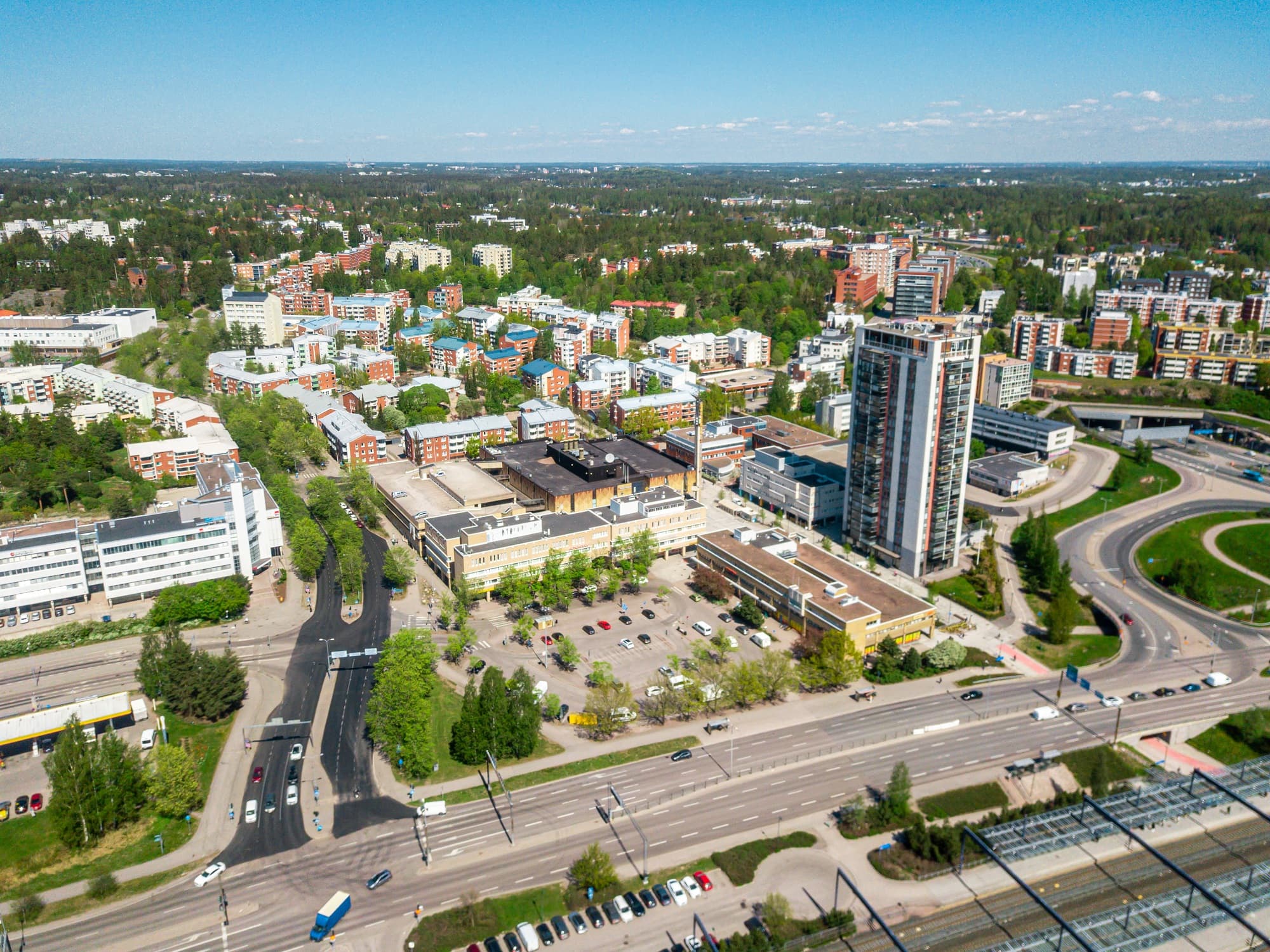Information about Espoo
Local information
Select your municipality in order to see information about local services when browsing the site.
Traffic
Public transportation
Espoo and the entire Metropolitan Area boast good public transport connections. There are several train and metro stations in Espoo. Many bus routes run through the city. The light rail runs from Keilaniemi to Itäkeskus in Helsinki.
Helsinki Region Transport (HSL)
Information and advice for passengersLink redirects to another websiteEspoo is part of Helsinki Region Transport, HRT (Helsingin seudun liikenne, HSL), a joint municipal authority that organises public transport in the Metropolitan Area. More information is available on HRT’s website.
You can use the Journey Planner (Reittiopas) service to search for information on routes in the Metropolitan Area. The service instructs you on how to get from one place to another using public transport.
You can use the HSL mobile app or a travel card to pay on public transport. Many shops and kiosks also sell tickets. You can also buy a ticket at a vending machine. You cannot buy a ticket from the driver.
Walking and bicycling
There are many walking and cycling routes in Espoo, which are also open in the winter.
In Espoo and Helsinki, there are city bikes that you can use to travel short distances. Register for the services on the HSL website.
Motor and air traffic
Many metro and railway stations offer free car parks for commuters who wish to continue their journey using public transport.
Helsinki–Vantaa Airport is located in Vantaa, Espoo's neighbouring municipality.
Read more: Traffic
Decision-making and public engagement
Decisions regarding Espoo are made by the City Council. It has 75 members, who represent the different political groups. The Council is elected every four years in a municipal election.
Residents of Espoo can affect the making and preparation of decisions in many ways. You can send feedback to decision-makers and officials through the electronic feedback system, for example. You can also take part in resident activities or present a motion to municipal authorities. For more information on social engagement, visit the City of Espoo website.
Espoo has an Advisory Board for Promotion of Integration.
There are political associations, immigrant associations and other organisations in Espoo through which you can affect decision-making.
Religion
There are many religious communities in Espoo and Helsinki. The Religions in Finland service provides you with the opportunity to search for information according to religious community or municipality.
Read more: Cultures and religions in Finland
Basic information
Espoo is one of the four municipalities in the Helsinki Metropolitan Area. It is located next to Helsinki, on its western side. Espoo boasts five urban centres: Leppävaara, Tapiola, Matinkylä-Olari, Espoonlahti and Espoon keskus. In addition, it features smaller urban areas, countryside and natural forests.
Espoo is Finland’s second-largest city. Espoo has a population of about 300,000. The majority of the residents speak Finnish. Some 7% of the population speak Swedish, and roughly 20% speak foreign languages. Espoo covers an area of approximately 528 km2, of which 216 km2 is water.
History
There were residents in the Espoo area as long as 8,000 years ago. Southern Espoo was covered by sea at the time. In the 13th century, many immigrants from Sweden moved to Espoo. In the 15th century, Espoo became an independent parish comprising several villages. Large manors were built in Espoo, which had great significance in terms of the development of the city. When Finland was annexed to Russia, Helsinki became the capital in 1812. Although Helsinki grew at a rapid pace, Espoo remained a quiet town in the countryside for quite some time. Population influx to Espoo accelerated in the 1940s and thereafter. In 1950, Espoo had 25,000 residents, 15 years later the population had risen to 65,000. Espoo received city status in 1972.
